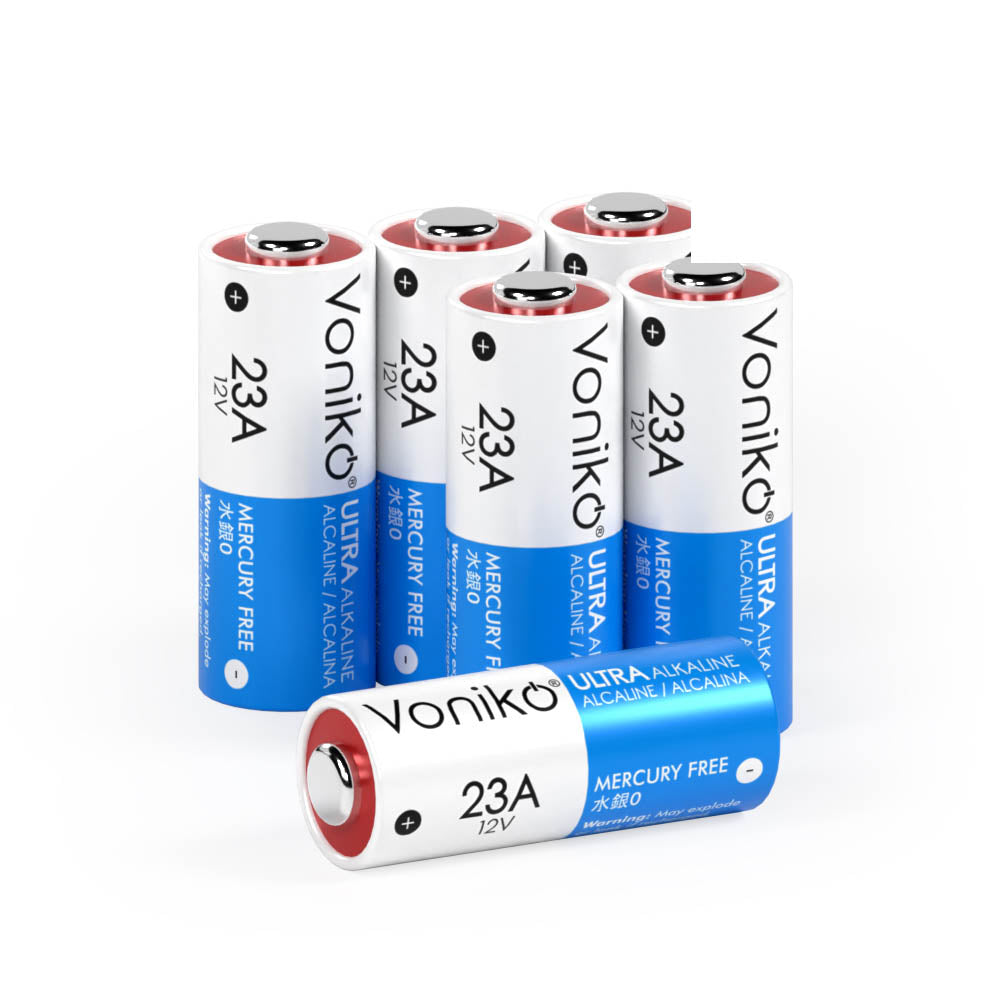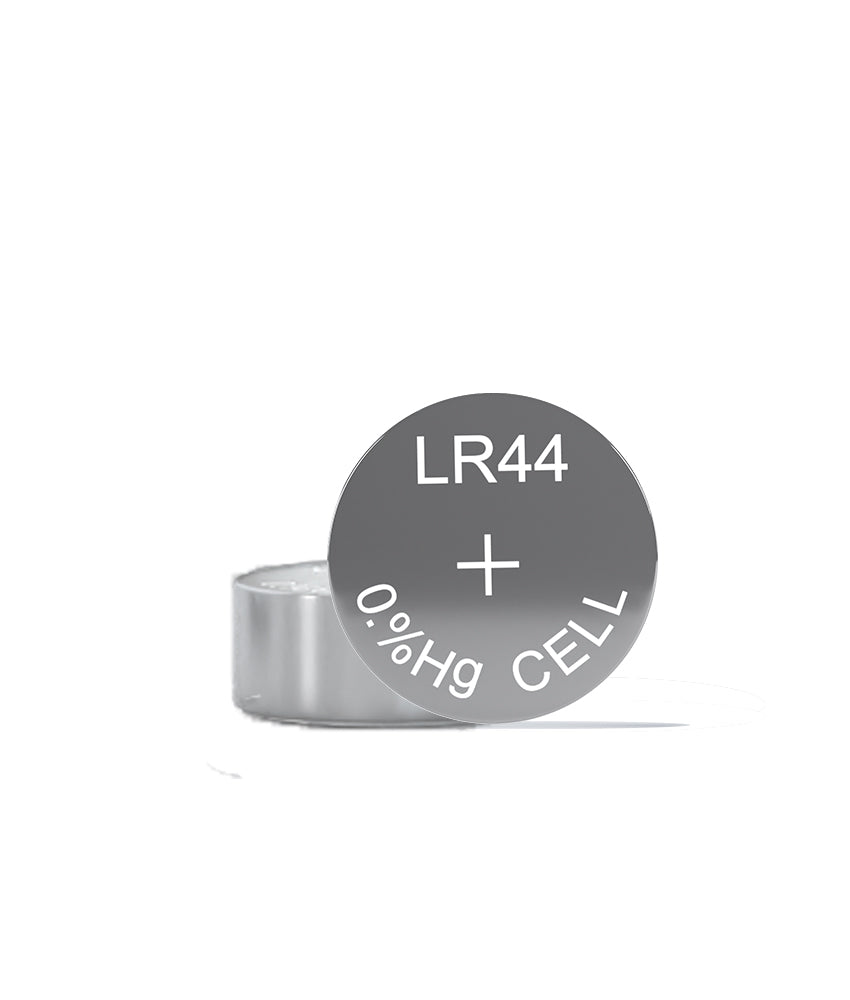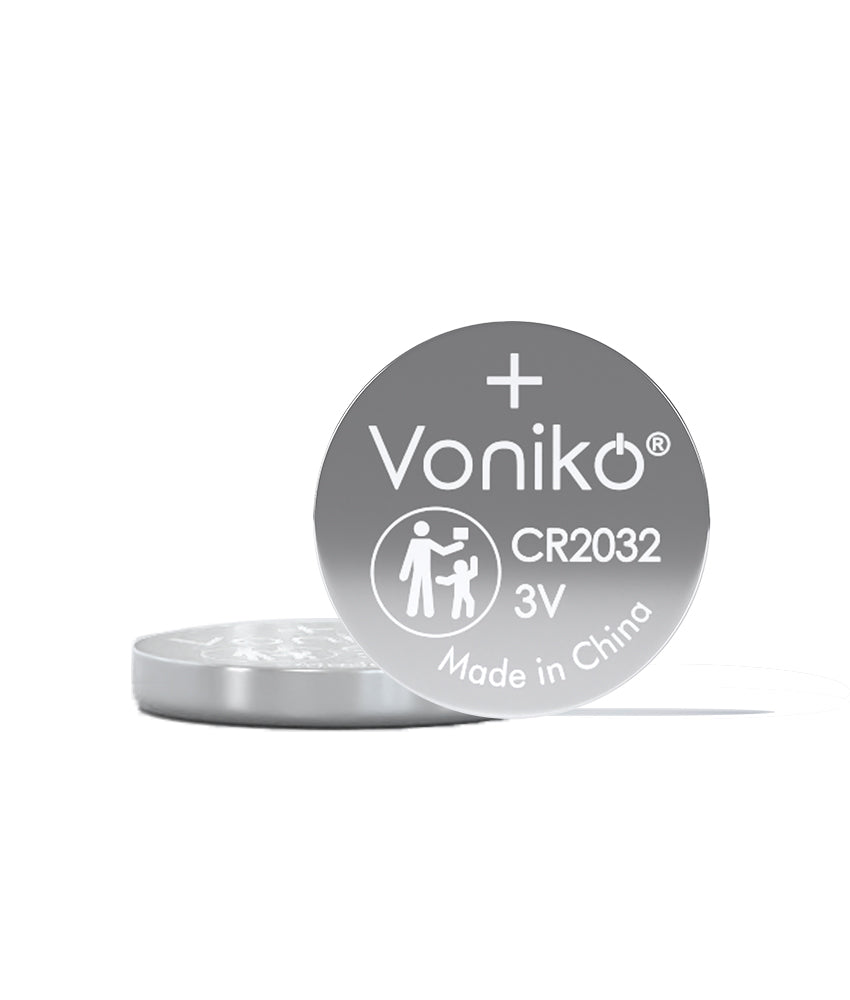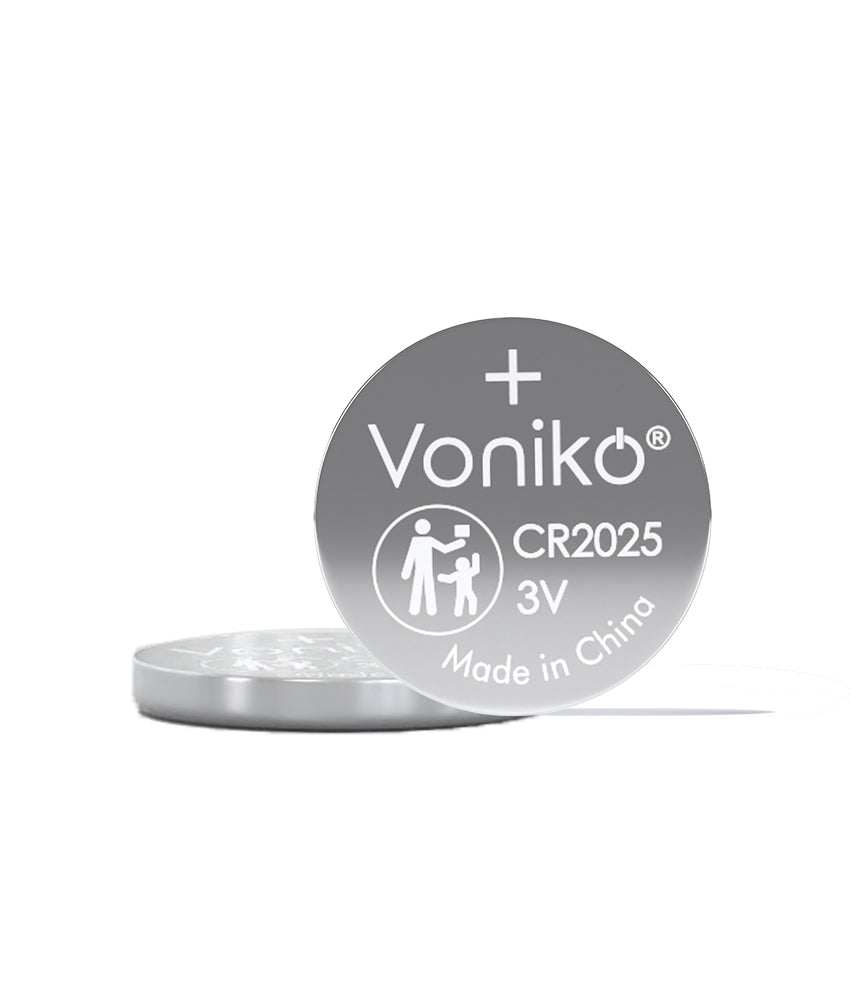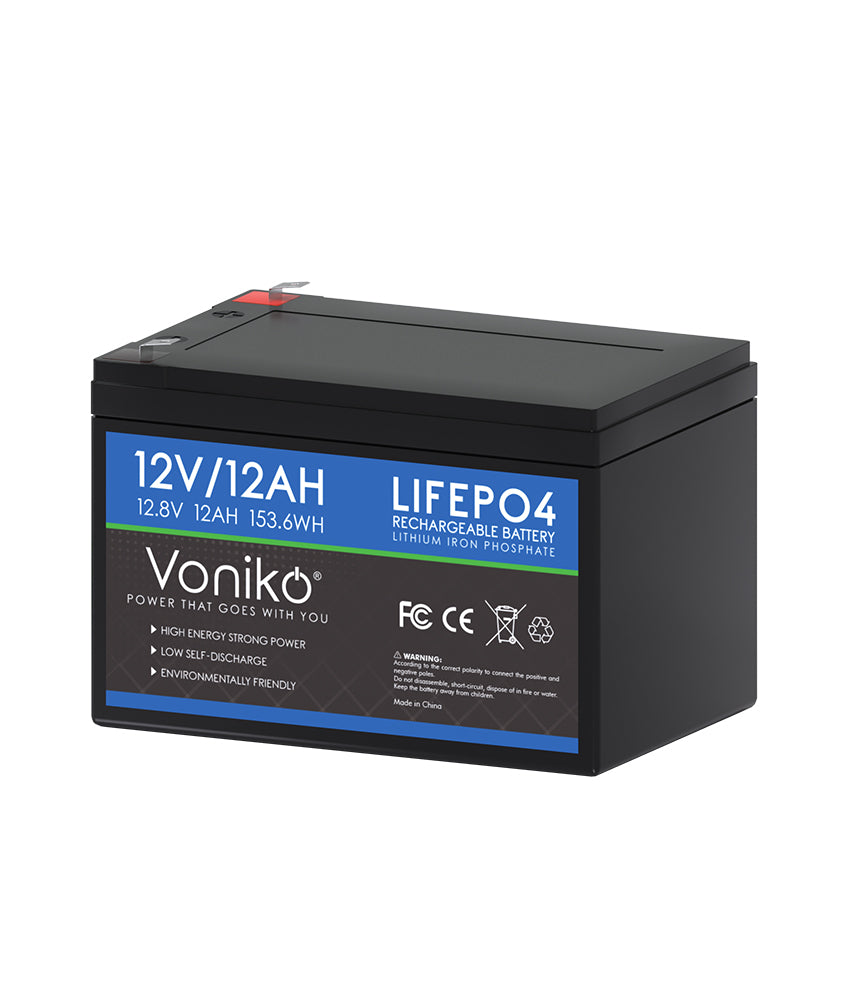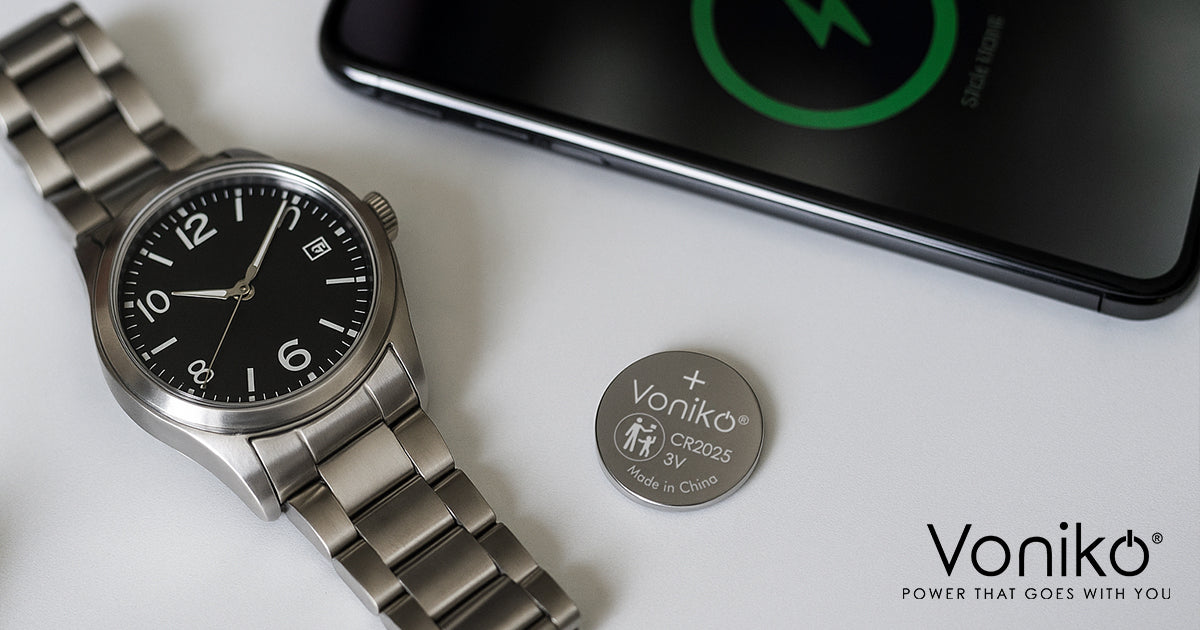Your watch just stopped ticking, and you're staring at a timepiece that's become nothing more than a fashionable bracelet. Sound familiar? Watch battery failure is one of those inevitable inconveniences that always seems to happen at the worst possible moment – right before an important meeting or when you're rushing to catch a flight.
The good news is that replacing a watch battery is usually simple and inexpensive, but choosing the right battery can be confusing with all the different sizes and types available.
At Voniko, we've been helping customers power their most important devices for years, and watches are no exception. Our coin cell battery collection includes all the most common watch battery sizes with the reliability and longevity you need to keep your timepiece running accurately. Whether you need a quick replacement or want to stock up for future needs, understanding watch batteries will save you time, money, and frustration.
Watch Battery Types and Chemistry
Watch batteries are actually a specialized type of coin cell battery, designed to provide steady, low-drain power for extended periods. Most modern watches use lithium coin cell batteries, which offer excellent longevity and stable voltage output – exactly what precision timekeeping requires.
The most common watch battery chemistry is lithium manganese dioxide, which provides a nominal voltage of 3 volts and excellent shelf life. These batteries can maintain their charge for years, even when not in use, making them perfect for watches that might sit in a drawer between wears or for keeping spare batteries on hand.
Some older watches or specific types still use alkaline coin cells, which operate at 1.5 volts. While these are less common in modern timepieces, you might encounter them in vintage watches or certain specialized models. The voltage difference is crucial – using the wrong type can affect your watch's accuracy or potentially damage its movement.
Main watch battery chemistries:
- Lithium (3V): Most common, longest lasting, best for modern watches
- Alkaline (1.5V): Less common, shorter lifespan, found in older or budget watches
- Silver oxide (1.55V): Premium option, extremely stable voltage, used in high-end watches
The chemistry affects not just performance but also how long your watch will run and how accurately it will keep time.
Common Watch Battery Sizes and Model Numbers
Watch batteries come in dozens of different sizes, each identified by a specific model number that tells you its dimensions and sometimes its chemistry. The most common sizes you'll encounter are CR2032, CR2025, and CR2016 for lithium batteries, and LR44 for alkaline coin cells.
The numbering system might seem random, but it actually contains useful information. For lithium batteries starting with "CR," the first two digits after the letters indicate the diameter in millimeters, and the last two digits show the thickness in tenths of millimeters. So a CR2032 battery is 20mm in diameter and 3.2mm thick.
Most watch manufacturers print the required battery size somewhere on the watch case back, inside the battery compartment, or in the user manual. If you can't find this information, carefully removing the old battery will reveal the model number printed on its surface.
Most common watch battery sizes:
- CR2032: 20mm diameter, 3.2mm thick – very common in digital watches
- CR2025: 20mm diameter, 2.5mm thick – thinner profile for sleeker watches
- CR2016: 20mm diameter, 1.6mm thick – ultra-thin watches and fitness trackers
- LR44: 11.6mm diameter, 5.4mm thick – small analog watches and some digital models
Never try to force a battery that doesn't fit properly. Using the wrong size can damage your watch's battery contacts or prevent the case back from closing correctly, potentially affecting water resistance or allowing dust and moisture to enter the movement.
How Long Do Watch Batteries Last
Watch battery lifespan varies significantly depending on the watch type, features, and usage patterns, but most quality batteries will power a basic analog watch for 2-5 years. Digital watches with additional features like alarms, backlighting, or smart functions typically need battery replacement every 1-3 years.
The biggest factor affecting battery life is what your watch actually does. A simple analog watch with just hour, minute, and second hands draws very little power and can run for years on a single battery. Add features like a date display, chronograph functions, or LED backlighting, and power consumption increases dramatically.
Digital watches and smartwatches are particularly power-hungry, especially those with always-on displays, Bluetooth connectivity, or frequent notifications. Some fitness trackers and hybrid smartwatches might need battery replacement every 6-12 months depending on usage patterns and screen brightness settings.
Typical battery life expectations:
- Basic analog watches: 3-5 years with quality lithium batteries
- Analog with date/day: 2-4 years depending on complications
- Digital LCD watches: 1-3 years based on features and usage
- Chronograph watches: 1-2 years due to additional power draw
- Smartwatch hybrids: 6 months to 2 years depending on connectivity features
Temperature extremes can also affect battery life. Watches exposed to very hot or cold conditions may experience shorter battery life, though quality lithium coin cells handle temperature variations much better than alkaline alternatives.
Are All Watch Batteries the Same Size
Definitely not – watch batteries come in many different sizes, and using the wrong size can damage your watch or prevent it from working properly. Even batteries that look similar might have slight differences in diameter or thickness that make them incompatible with your specific timepiece.
The confusion often comes from the fact that many watch batteries look quite similar at first glance. A CR2025 and CR2032 are both 20mm in diameter, but the CR2032 is nearly twice as thick. Trying to force the thicker battery into a compartment designed for the thinner one can damage the watch case or prevent proper closure.
Even within the same size designation, there can be slight variations between manufacturers. Quality control standards vary, and some cheaper batteries might be slightly oversized or undersized, causing fit problems. This is why sticking with reputable battery brands is important for both performance and proper fit.
Size matters because:
- Diameter variations: Even 0.5mm difference can prevent proper fit
- Thickness issues: Wrong thickness affects case closure and water resistance
- Contact alignment: Incorrect size can misalign battery contacts
- Pressure problems: Oversized batteries can put stress on watch components
Always verify the exact battery model number required for your watch before purchasing replacements. When in doubt, bring your old battery to compare sizes, or consult your watch's documentation for the specific battery type recommended by the manufacturer.
How to Change Watch Batteries
Changing a watch battery is usually straightforward, but the process varies depending on your watch's case design. Most watches have either a snap-on case back, screw-on case back, or require special tools to access the battery compartment. Understanding your watch type helps you prepare for the replacement process.
For watches with snap-on case backs, you'll typically see a small notch or groove where you can insert a thin tool to pop off the back cover. A case knife, thin screwdriver, or even a sturdy fingernail can work for this type. Be gentle and work around the perimeter rather than forcing one spot.
Screw-on case backs require more patience and often benefit from having the right tools. Some have notches for a case wrench, while others have a smooth back that requires a rubber ball or friction tool to grip and turn. Always turn counterclockwise to remove, and don't over-tighten when reassembling.
Basic battery replacement steps:
- Note the time and date settings before starting
- Remove the case back using appropriate method for your watch type
- Photograph the battery position before removal for reference
- Carefully lift out the old battery without touching other components
- Insert the new battery in exactly the same position and orientation
- Replace the case back ensuring proper seal and alignment
- Reset time and date as needed
Some watches have additional complications like battery clips, insulation washers, or electronic components that must be handled carefully. If you're uncomfortable with the process or have an expensive watch, consider having a professional jeweler or watch repair shop handle the replacement.
Signs Your Watch Battery Needs Replacement
Don't wait for your watch to completely stop before replacing the battery. Most watches give several warning signs that the battery is getting weak, and catching these early can prevent the inconvenience of a dead timepiece at a critical moment.
The most obvious sign is erratic timekeeping. If your usually accurate watch starts gaining or losing time, weak battery voltage is often the culprit. Digital watches might show dim displays, flickering segments, or reduced backlight brightness as early indicators of battery problems.
Some digital watches have built-in low battery indicators, typically a flashing display or special icon that appears when battery voltage drops below a certain threshold. Don't ignore these warnings – replace the battery promptly to avoid complete failure.
Early warning signs of weak watch batteries:
- Timekeeping accuracy changes: Watch runs fast, slow, or erratically
- Dim or flickering display: Reduced brightness or unstable segments
- Weak or non-functioning backlight: LED illumination becomes dim or fails
- Intermittent operation: Watch works sometimes but not consistently
- Date/day display problems: Complications fail to change or display incorrectly
Analog watches might show different symptoms, such as the second hand jumping in 2-4 second increments instead of smooth one-second movements, or stopping entirely while hour and minute hands continue to function. These behaviors indicate insufficient power to drive all watch functions normally.
Shopping Tips for Watch Batteries
Buying watch batteries might seem straightforward, but a few shopping tips can help you get better value and avoid common pitfalls. First, always buy from reputable sources that store batteries properly and have good turnover. Batteries that sit on shelves for years lose capacity even before you install them.
Consider buying batteries in small quantities unless you have multiple watches that use the same size. While bulk packs might seem economical, watch batteries have excellent shelf life but not unlimited storage time. Buying 2-4 batteries at once gives you spares without risking deterioration from long storage.
Pay attention to packaging dates and expiration information when available. Quality batteries like our Voniko coin cells are date-coded printed on the battery packaging and designed for long shelf life, but fresher batteries always perform better than older stock.
Smart shopping strategies:
- Buy quality brands: Invest in reliable batteries for important timepieces
- Check compatibility: Verify exact model numbers before purchasing
- Consider packaging: Individual packaging protects batteries better than bulk strips
- Store properly: Keep spare batteries in cool, dry conditions
- Stock common sizes: Keep CR2032 and CR2025 on hand for most modern watches
When shopping online, read product descriptions carefully to ensure you're getting the right battery type and voltage. Some sellers mix lithium and alkaline batteries in search results, and ordering the wrong type can waste time and money.
Extending Watch Battery Life
While you can't make batteries last forever, several simple practices can help maximize their lifespan and get the most value from your investment. Many of these tips cost nothing but can add months or even years to battery life in some watches.
For digital watches with backlights, use the illumination feature sparingly. Backlights are among the biggest power drains in digital timepieces, and excessive use can cut battery life in half. Similarly, limit use of chronograph functions unless necessary, as timing functions draw additional power.
If you have multiple watches and rotate between them regularly, consider removing batteries from watches that will sit unused for extended periods. This prevents slow discharge and potential leakage damage while preserving battery life for when you actually wear the watch.
Battery life extension tips:
- Minimize backlight use: Only illuminate when truly needed
- Avoid extreme temperatures: Don't leave watches in hot cars or freezing conditions
- Service watch movements: Clean, well-maintained movements run more efficiently
- Store unused watches properly: Remove batteries if storing for months
Keep your watch clean and dry, as moisture and dirt can create electrical paths that drain batteries faster. Regular maintenance and proper care of your timepiece helps ensure efficient operation and maximum battery life.
Whether you're replacing a dead battery in your everyday watch or stocking up for future needs, choosing quality coin cell batteries ensures reliable timekeeping and longer intervals between replacements. Don't let a dead battery stop time – invest in quality batteries that keep your watches running accurately and dependably for years to come.




